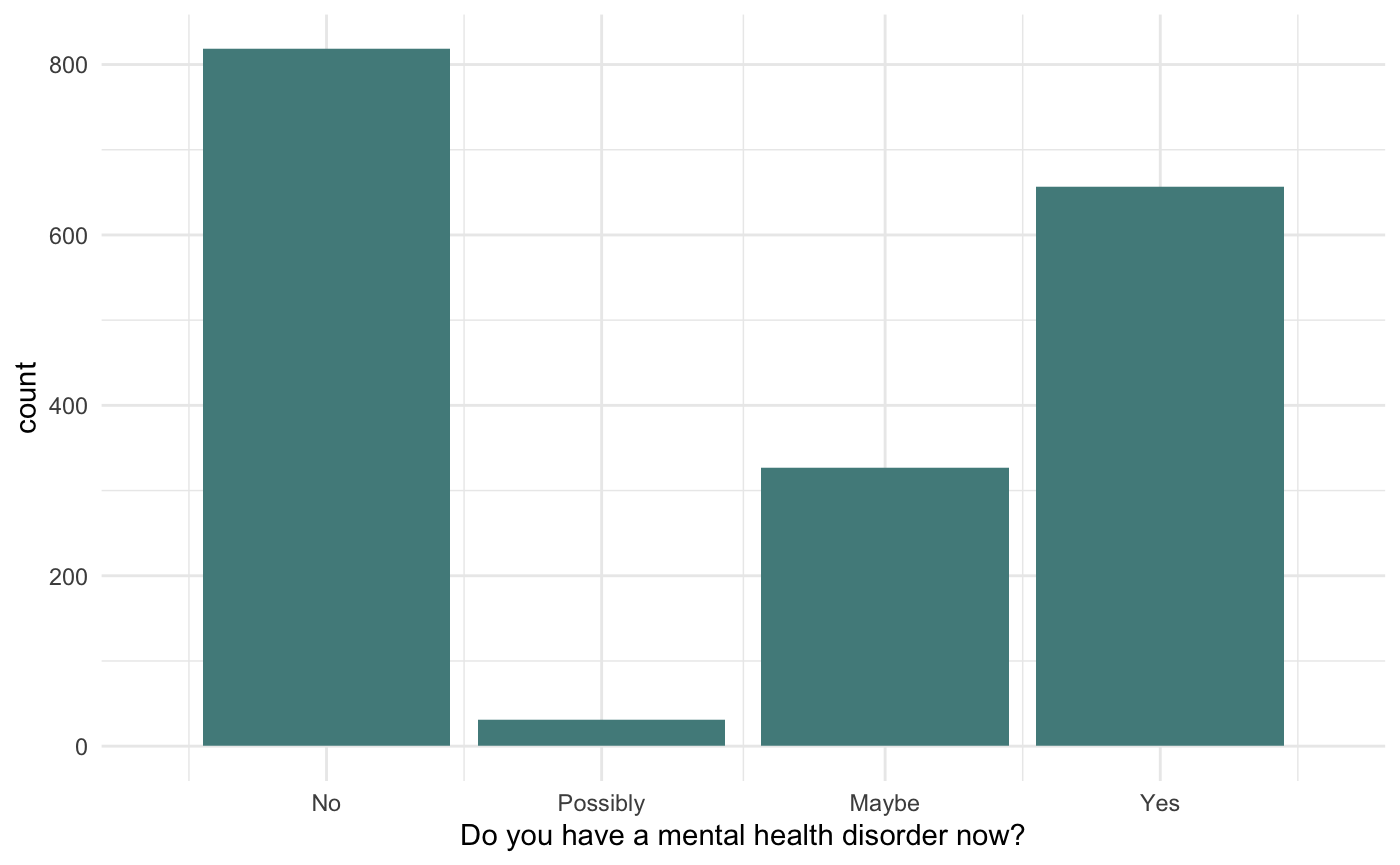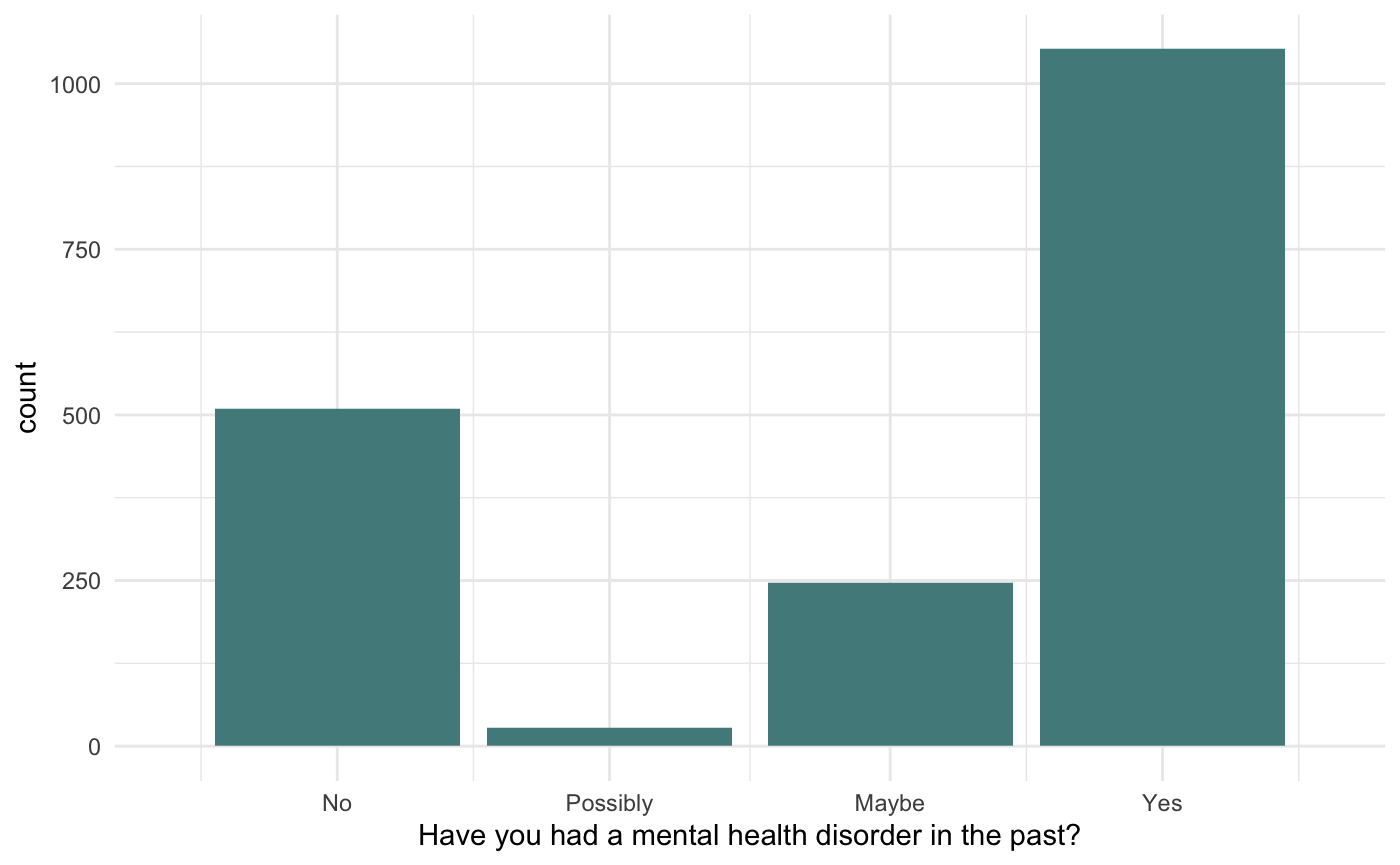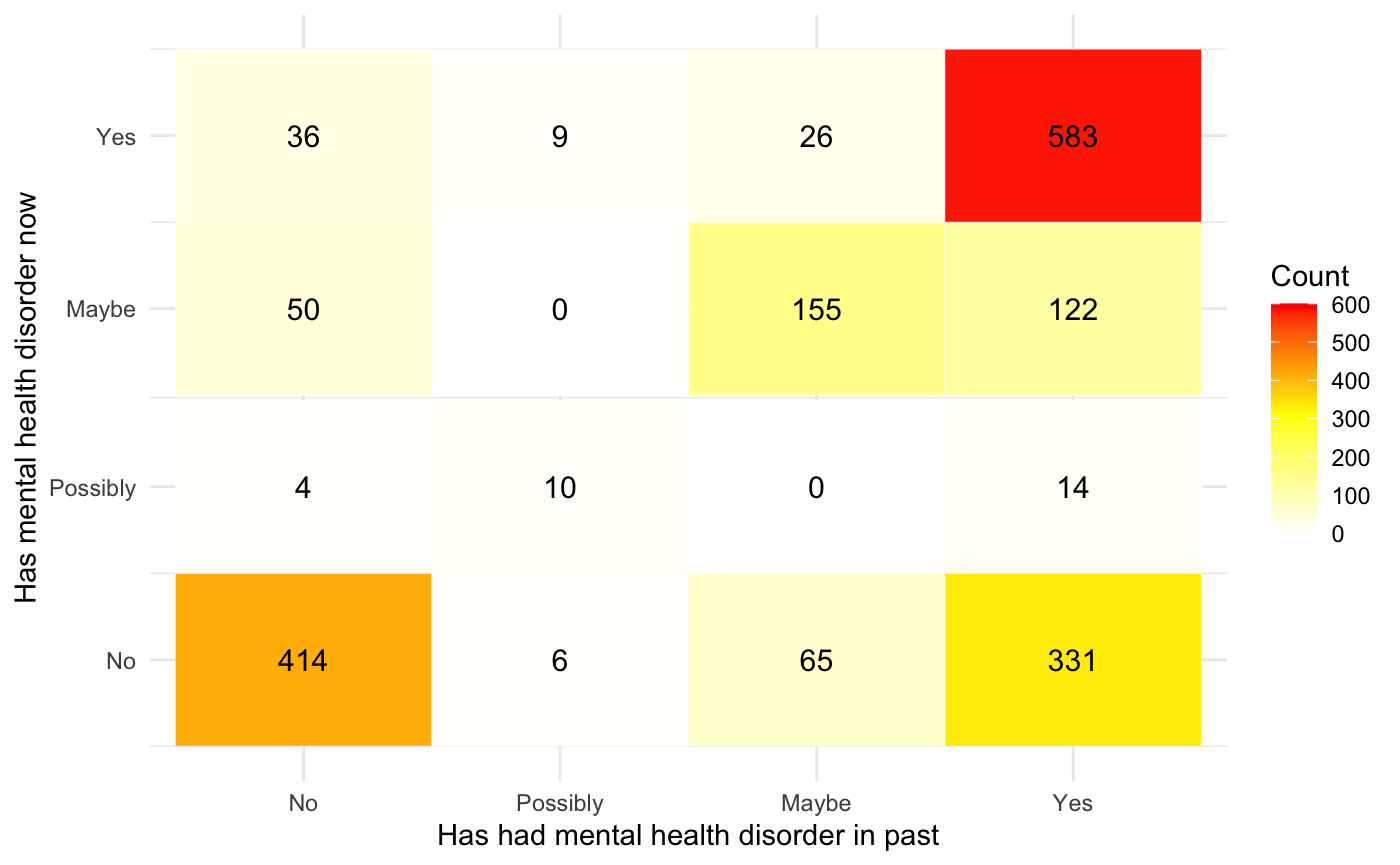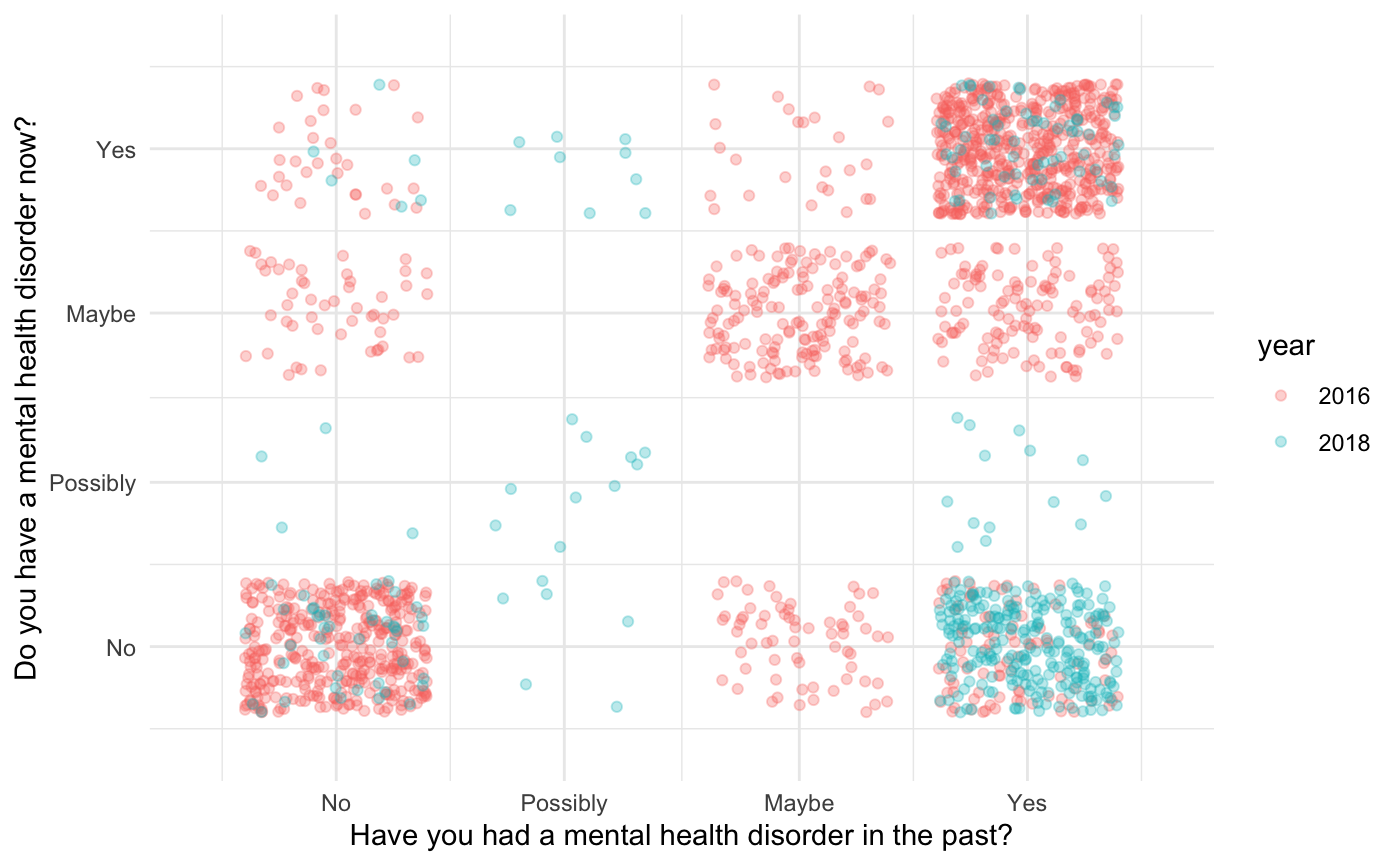Image credit: Hoi Chan
We continue our progress from last week, cleaning and combining datasets from the survey collected in 2016 and 2018 in order to compare mental health attitudes and prevalence in tech across these two years. We kept a record of changes in survey wording and questions here. From this, we note some questions are omitted or reworded from the two survey years.
In the combined survey data, we have 1850 respondents. We first assess the overall self-reported prevalence of mental health problems, dealing with currently and in the past. We then compare past mental health numbers to current, and by the survey years.
Self reports of mental health: past and present


More people report have having a mental health disorder in the past, than having one in the present. As this survey was targeted towards employees in tech, one explanation may be that workers with acute or severe mental health problems would not be currently employed or likely to respond to the survey.
Comparing past and present mental health
 When we compare self-reported prevalence of mental health problems, then and now, we see that the most popular combination of responses (
When we compare self-reported prevalence of mental health problems, then and now, we see that the most popular combination of responses (n=583, in red) is reporting “yes” to having had a past mental health disorder and “no” to having a current mental health disorder, followed by the orange cell (n=414), reporting “no” to having neither a past nor present mental health disorder.
2016 v 2018
 We see there were many more responses in 2016 (red dots,
We see there were many more responses in 2016 (red dots, n=1433) than 2018 (blue dots, n=417). Interestingly, it seems even with fewer responses in 2018, more respondents reported having “yes” a mental disorder in the past and present in 2018 than 2016. This change could reflect an actual increase in the prevalence of mental health disorders, or a change in response bias, such that the modern social climate more favors openness in reporting having had or having problems with mental health.
